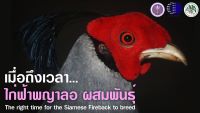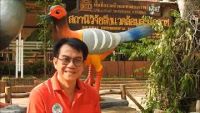Keywords :
Ecological Survey
บทคัดย่อ :
The term savanna forest is of some antiquity and was certainly used in a southeast Asian context by Kurz as early as 1875 to describe the periodically deciduous forests of Pegu, Burma, formations which he also variously called eng-forest , laterite-forest and low forest . These formations were confined to the drierregions of Burma. Schimper (1903, 354), however, was the first plant geographer to give the term wide currency in his now classic work, Plant geography upon a physiological basis, originally published in German in 1898. In Chapter 3, hedivides tropical woodlands into four main vegetation formations on the basis of their essential climatic affinities, thus recognizing for the first time rain forest, monsoon forest, savanna(h) forest and thorn forest.For Schimper (1903, 260), savanna forest was a formation which is more or less leafless during the dry season, rarely evergreen, is xerophilous in character,usually, often much, less than 20 metres high, park-like, very poor in underwood,lianes, and epiphytes, rich in terrestrial herbs, especially grasses . To a large extent,as we shall see, the essentials of this description still hold today, although epiphytes of genera like Dendrobium, Yanda and Dischidia tend to be abundant in savanna forest stands mixed with Pinus merkusii Jungh. & De Vriese found above 700 metres above sea level and in some associations top canopy trees can attain heights of over 30 metres (Stott, 1976). Schimper clearly differentiated his savanna forest formation from the ecologic-ally and geographically adjacent monsoon forest, which he saw as much taller,tropophilous in character and richer in lianes, although still more or less leafless during the dry season, especially towards its termination . Thorn forest, in contrast,was regarded as being more xerophilous, rich in underwood, poor in terrestrial herbs, especially grasses, and totally lacking in epiphytes. It is also important to note that Schimper was at pains to distinguish savanna forest from true tropical grasslands or savannas, which he saw as dominated by tall grasses with at greater or less distances apart trees that appear, usually as stunted, gnarled, dwarf trees,resembling our apple-trees, but occasionally as lofty individuals, which as a rule belong to characteristic species not present in the forest (p. 364). However, he then comments that when the trees become closer, the savannah passes over into savannah-forest .
เอกสารอ้างอิง :
Stott, P. (1984). The savanna forests of mainland southeast Asia: an ecological survey. Progress in Physical Geography, 8(3), 315-335.



